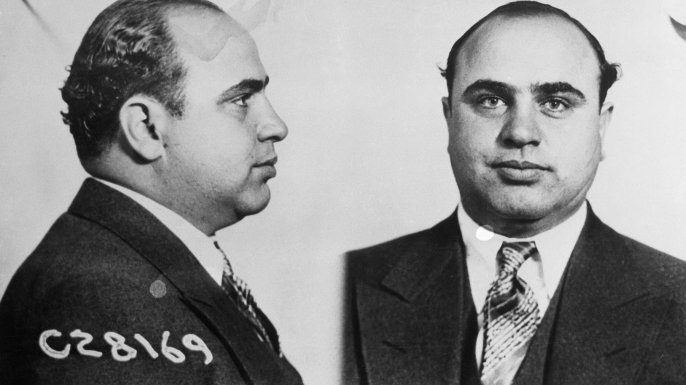Eastern State was simultaneously revolutionary, innovative, and horrifying. It used to house famous criminals like Al Capone and Will Sutton, but now it is a historic museum that helps educate the public on America's penal system and some of the current problems with it. In this post I'll take you along a brief tour we took on July 4th through photos and a video.
As you can see in the photo below, Eastern State is basically a big castle in the middle of a Philadelphia suburb.
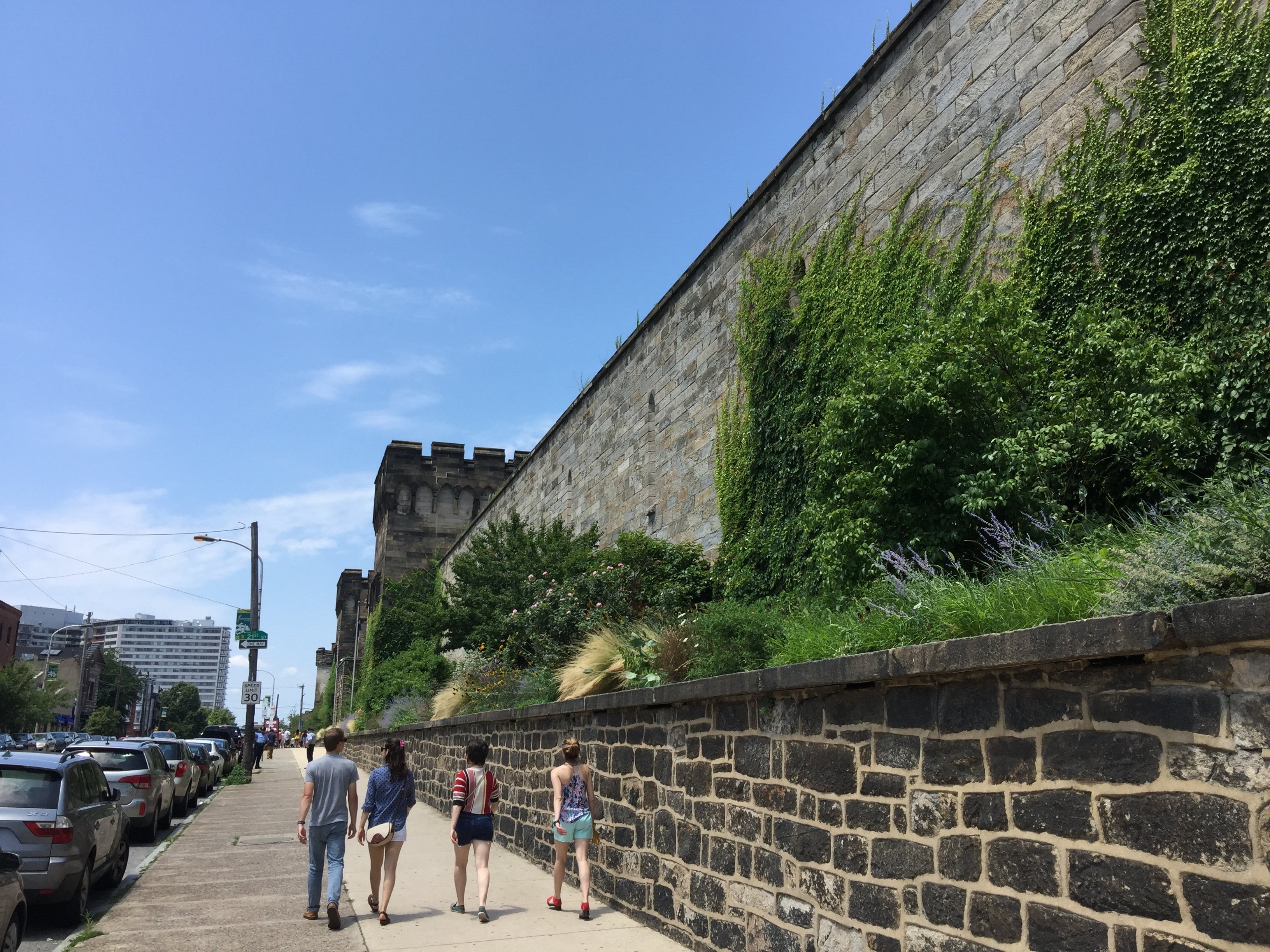
The prison closed in the 1970s, one can only imagine what the affluent neighborhood that now surrounds it would have looked like had the plans to keep it active gone into place.
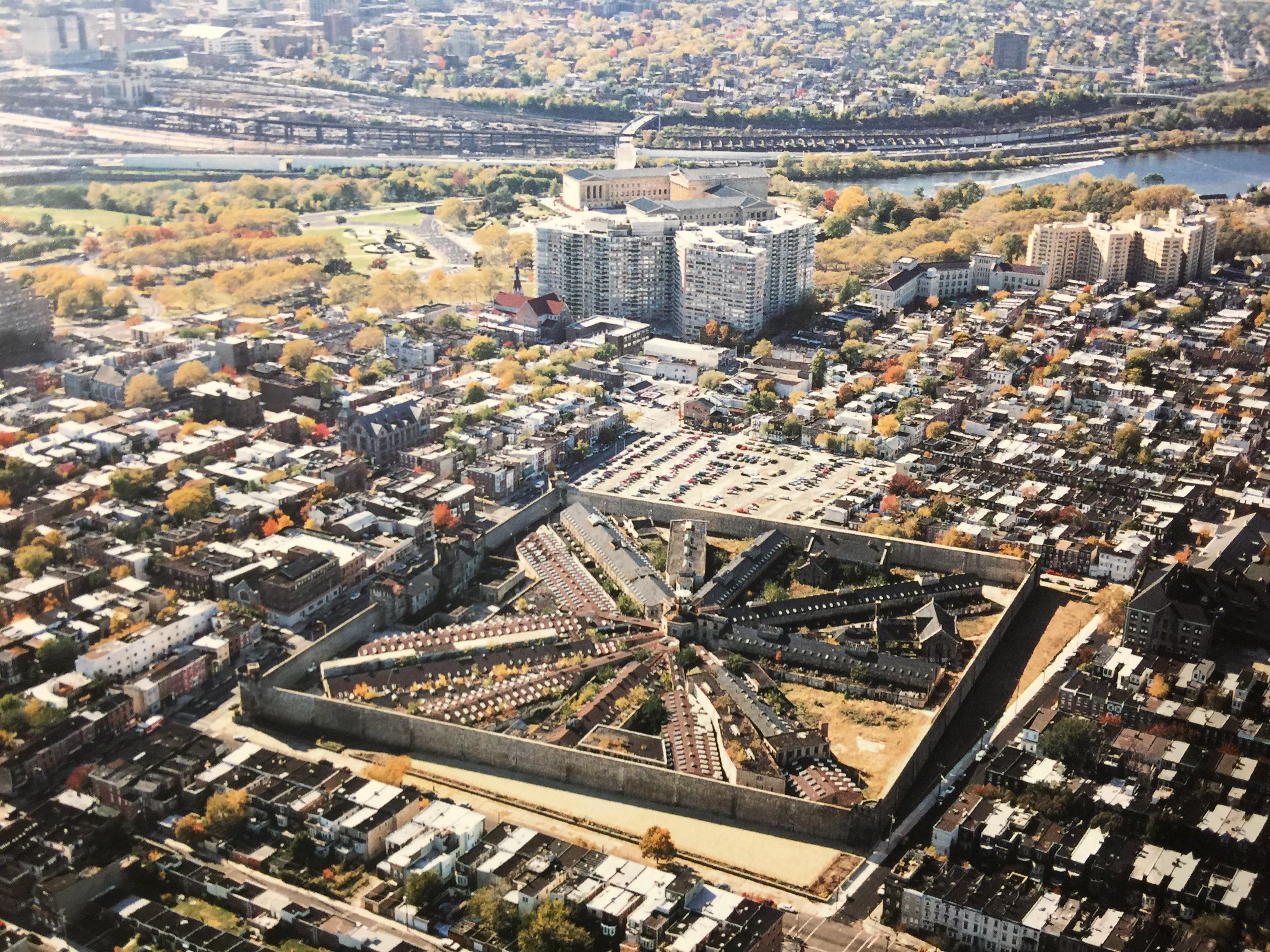
The prison was intentionally designed to look like a castle, but a lot of it is cosmetic. The explanation for why wasn't quite what I suspected. Apparently the design was intended more to "inspire awe" than any practical or economic concern. As you can see in the following photo, though on the outside there appeared to be windows through which arrows could be launched (even though the prison was opened in 1829) on the inside of the wall there is nothing. Most of the castle-like features are purely cosmetic.
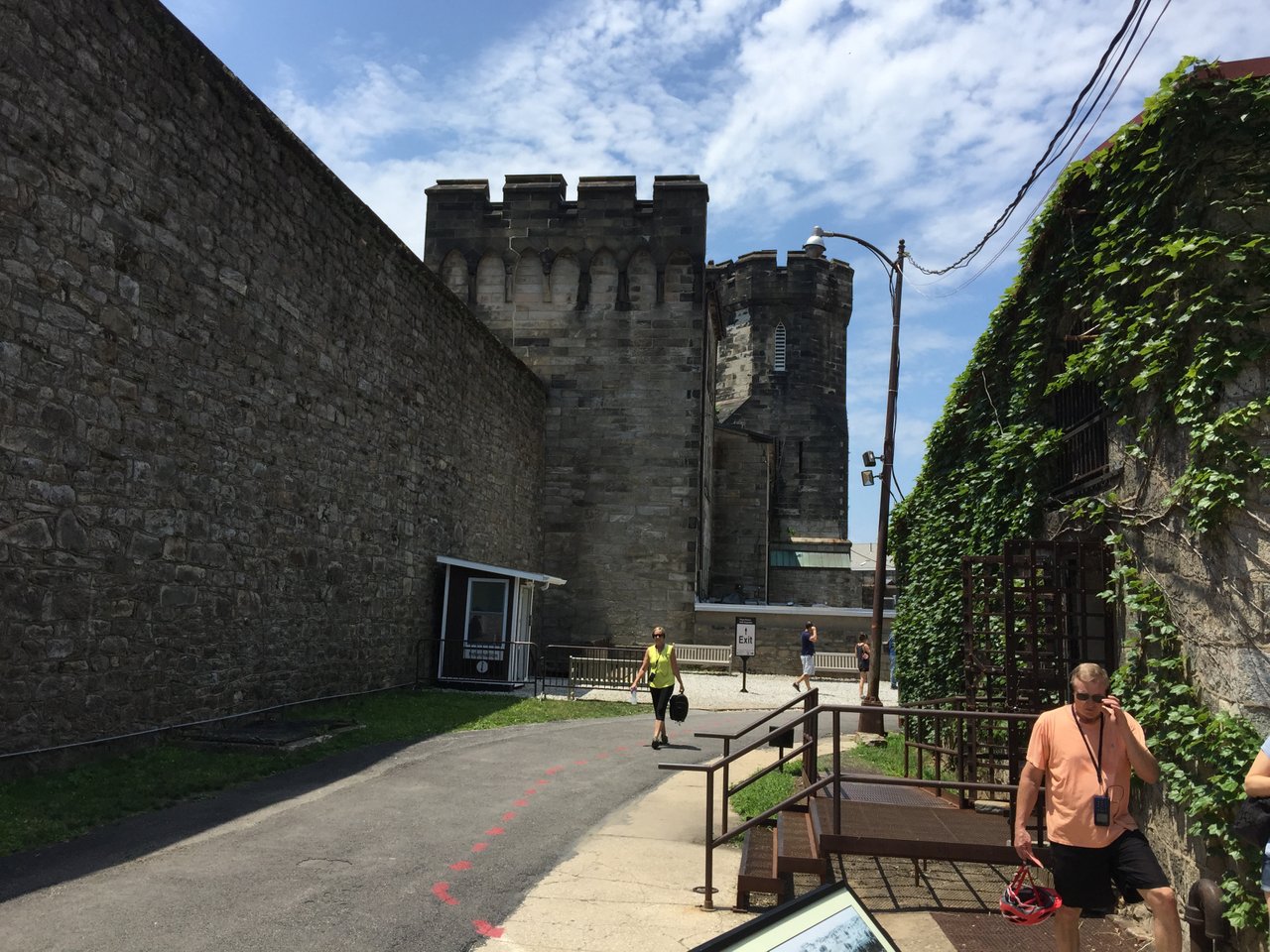
One of the things that I was constantly reminded of throughout the tour was how little information the people building the prison had. All they had were lofty ideals and mainly philosophical ideas -- no hard data. To them modeling their prison after a castle so as to inspire awe seemed perfectly logical, and who knows, maybe it was a good idea. That's not an easy thing to measure.
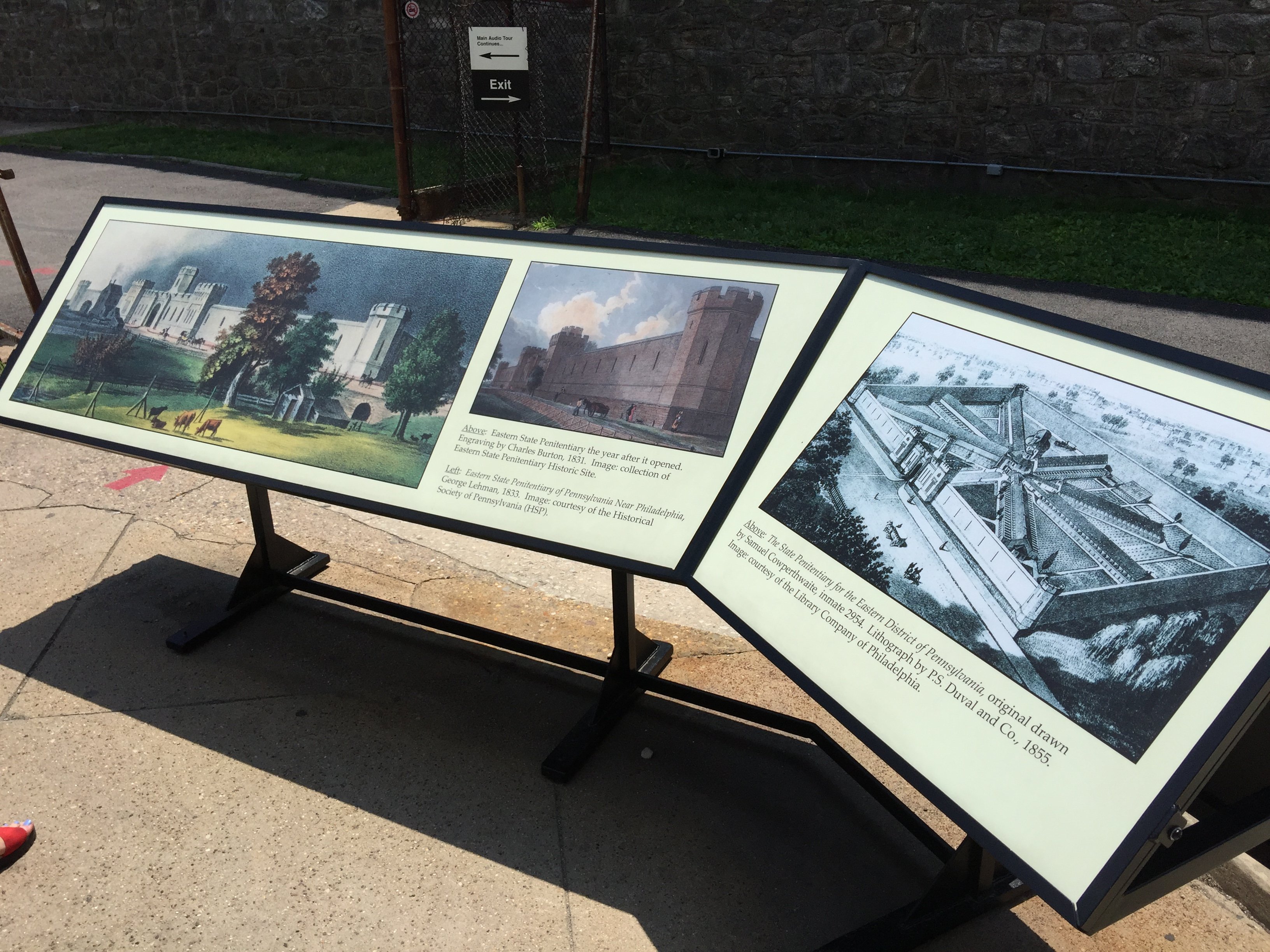
Despite the absence of hard science, the prison was intended to be state-of-the-art and seems to have been guided by genuinely philanthropic intentions. The effort was spearheaded by The Philadelphia Society for Alleviating the Miseries of Public Prisons which had none other than Benjamin Franklin as one of its founding members.
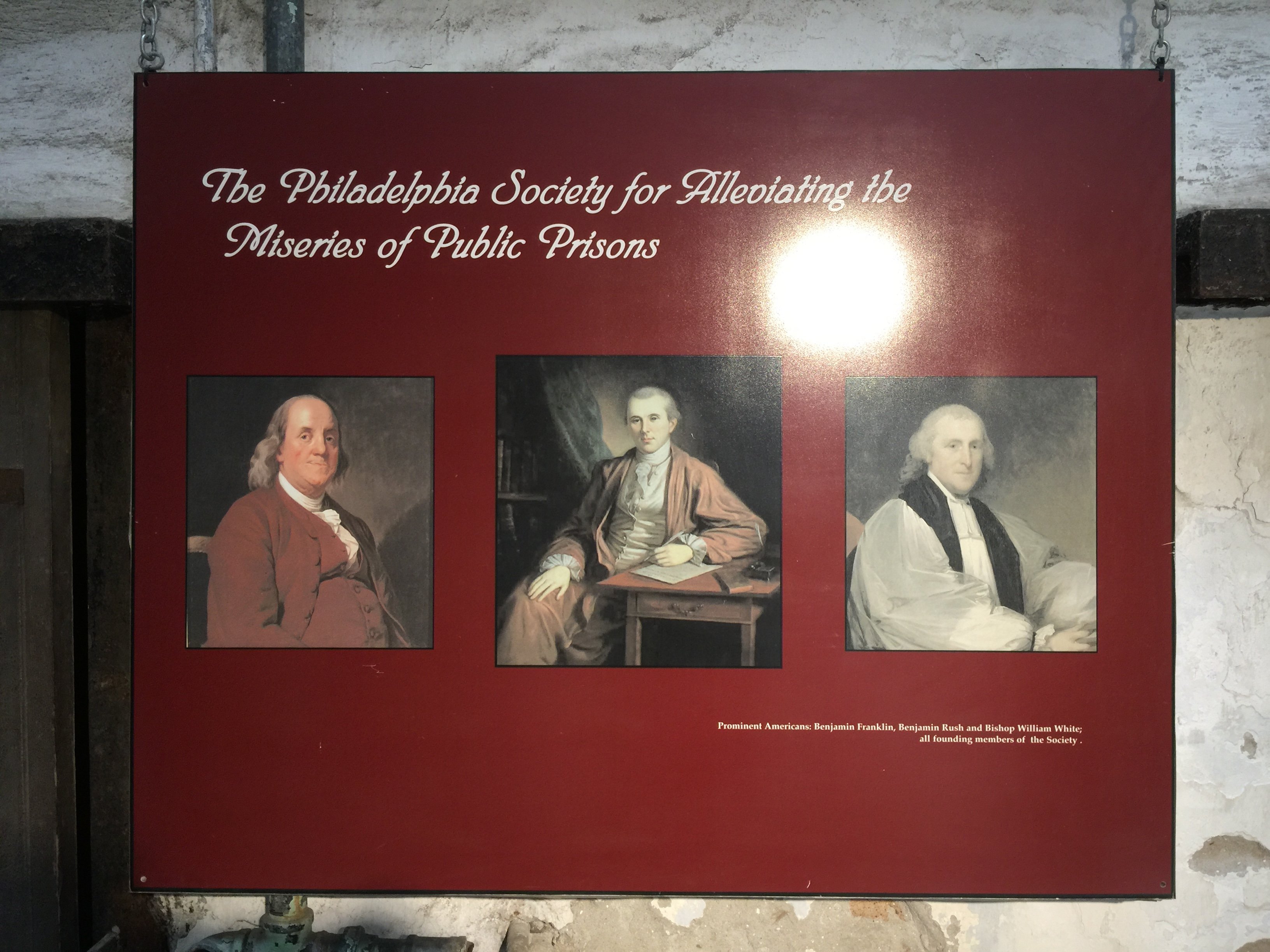
The prison was a massive endeavor that took years, and a large fortune, to build. The goal was to create a better system than this:
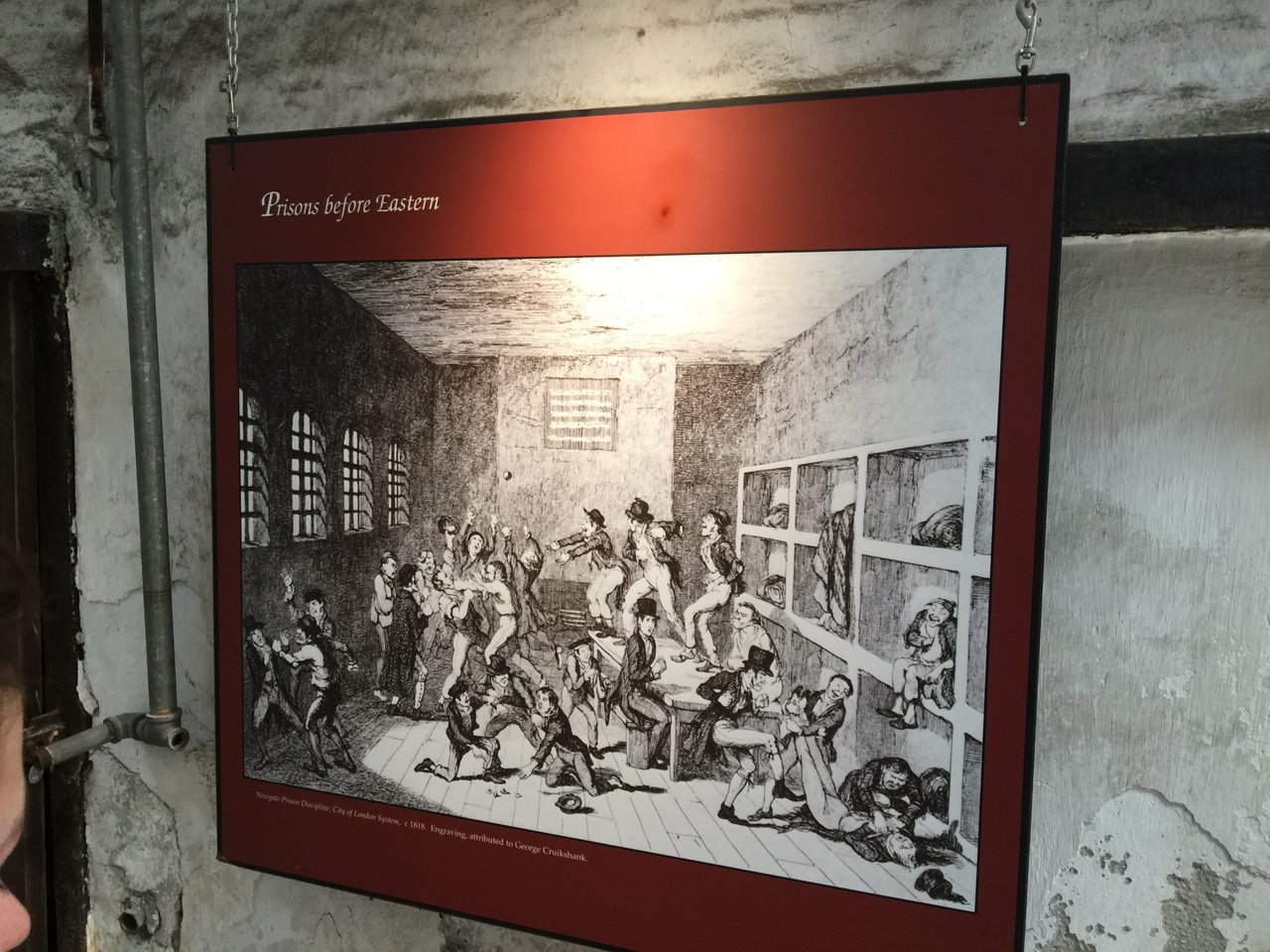
The prison they created was no doubt horrifying by modern standards, but it was also a big improvement over how criminality had been addressed in the past: mainly torture.
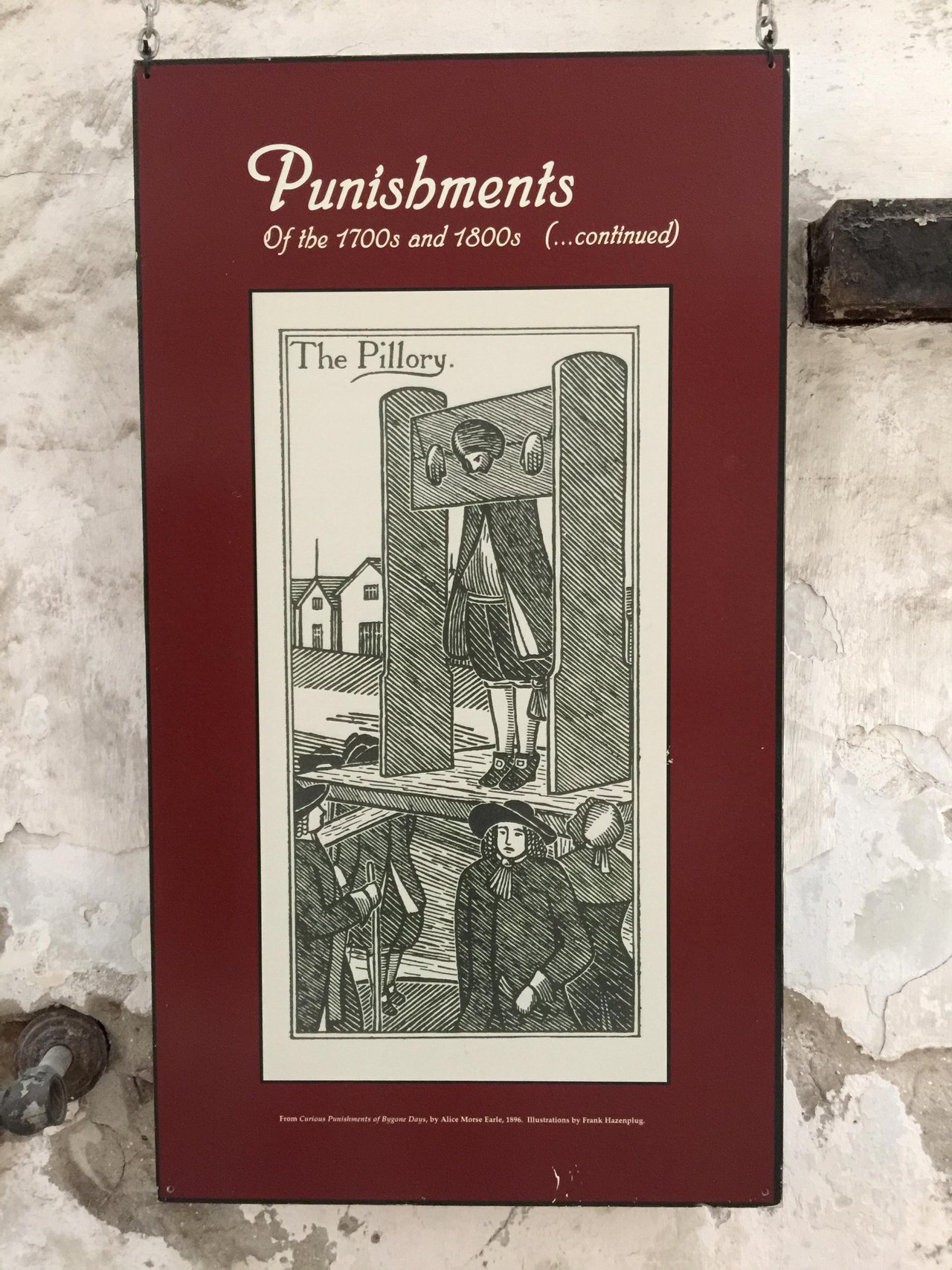
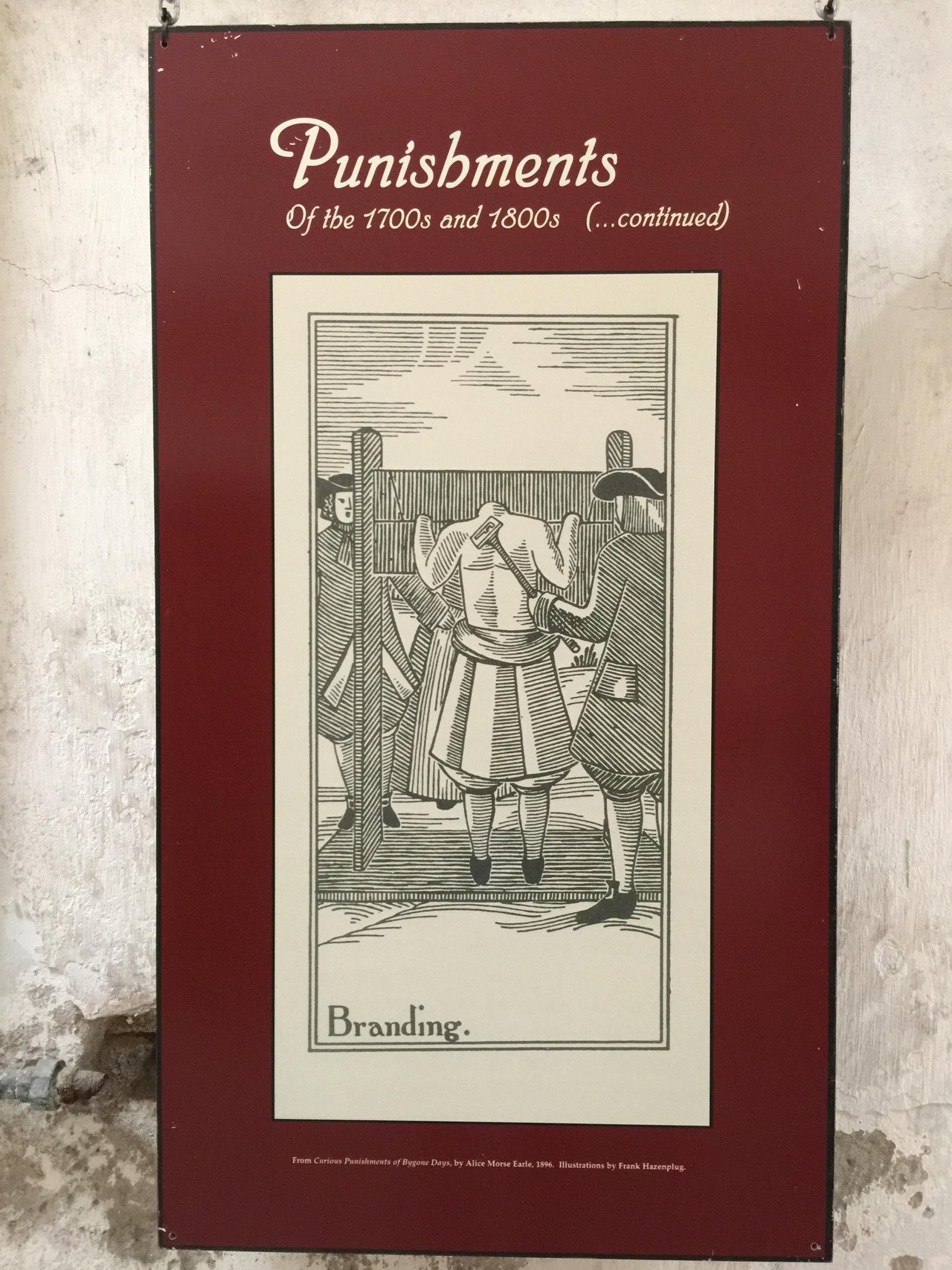
Compared to that, the idea of putting criminals in their own cells with plumbing (at a time when the President of the United States still used a chamber pot!), a bed, a desk, and access to a yard was absolutely revolutionary. This was the first time an institution was built that was intended to rehabilitate, not just punish.
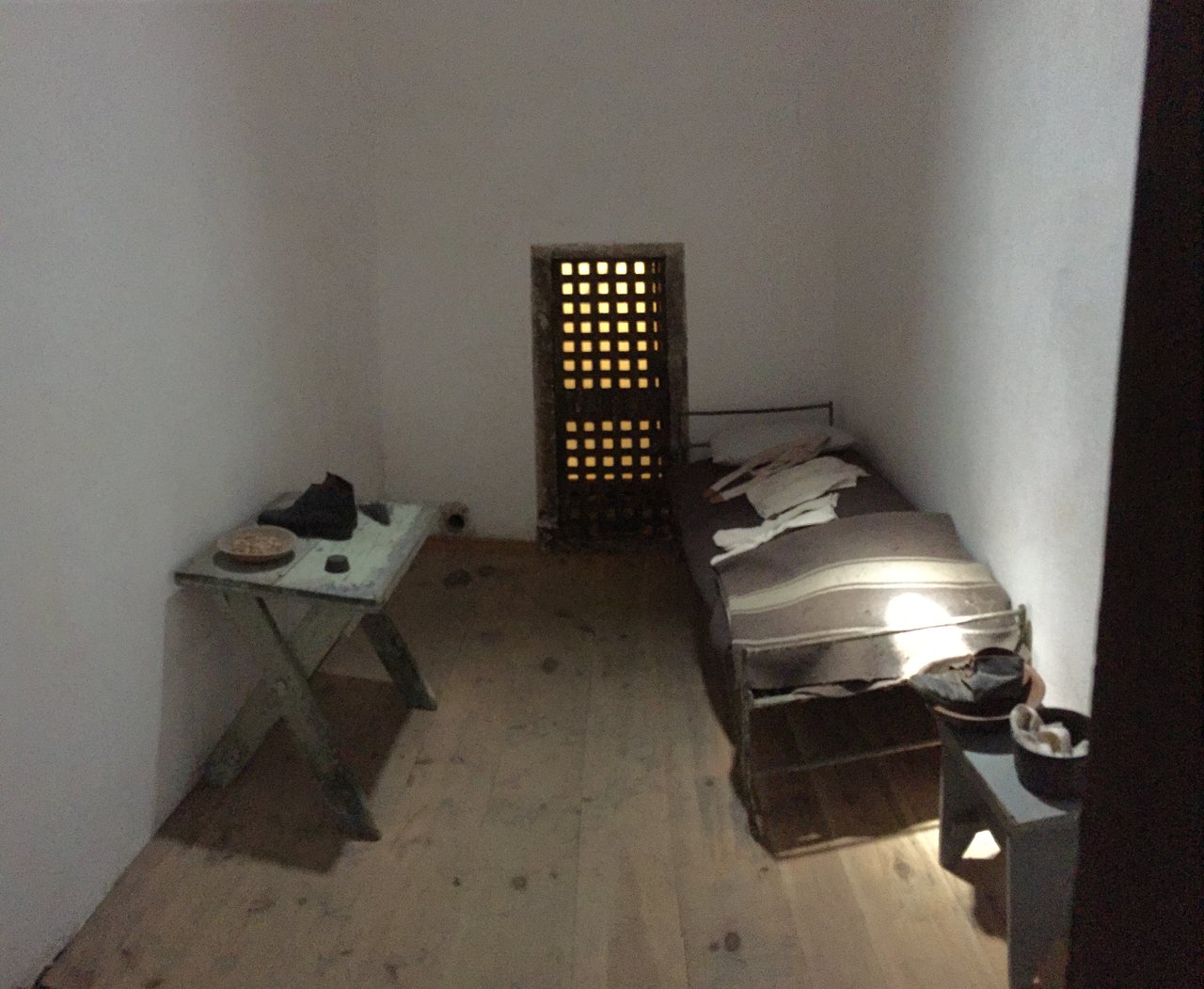
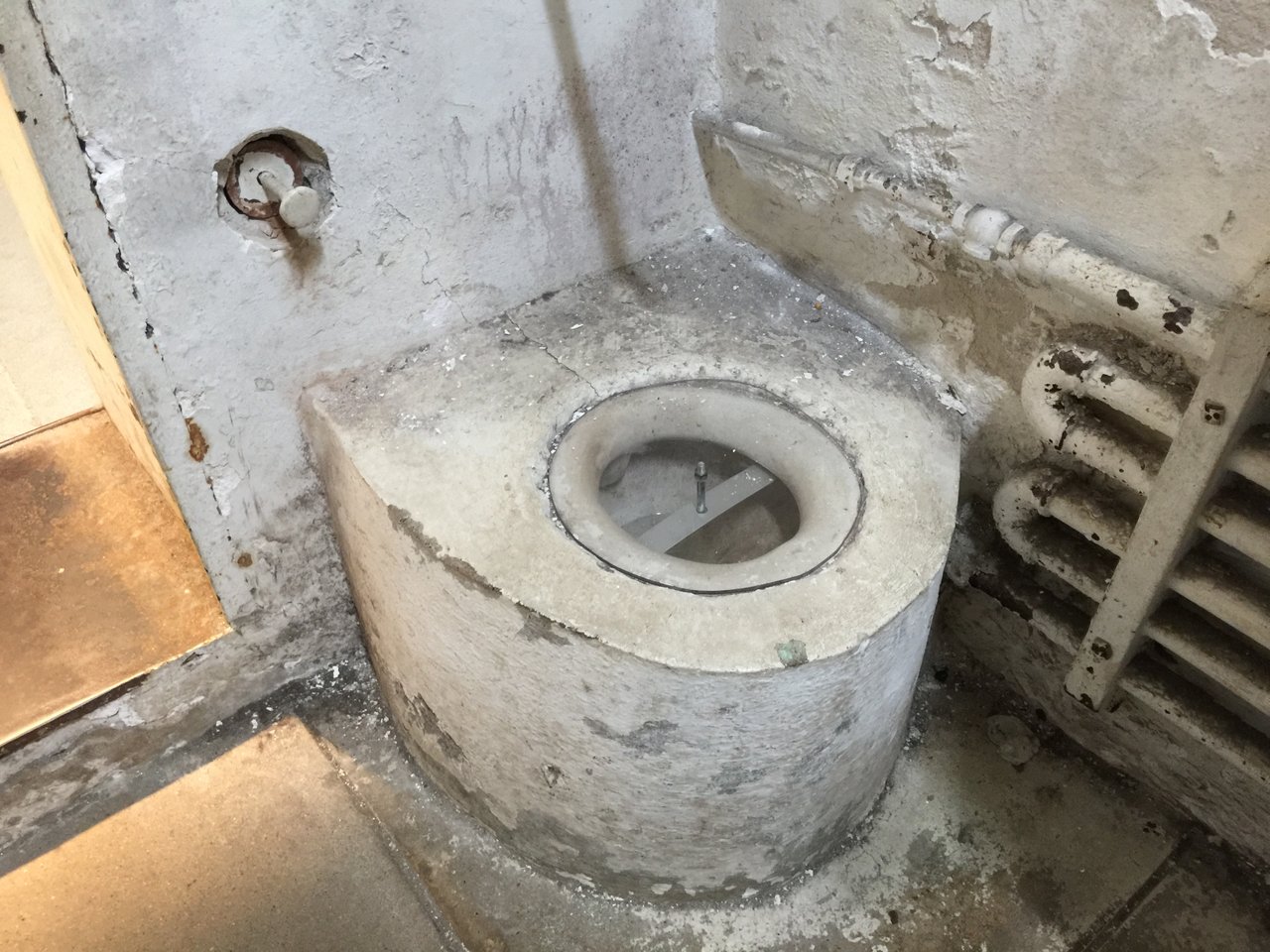
Unfortunately they started off by making a couple of big mistakes. The first was that they thought it would be best for rehabilitation purposes to have the inmates in their own cell. In other words, inmates at Eastern State were effectively in solitary confinement 23 hours a day for the duration of their sentence. Claims by people (including visitors like Charles Dickens) who voiced concern that this confinement would lead to mental health issues were, unfortunately, dismissed for a long time.
This differed from the rival system being pioneered in New York:
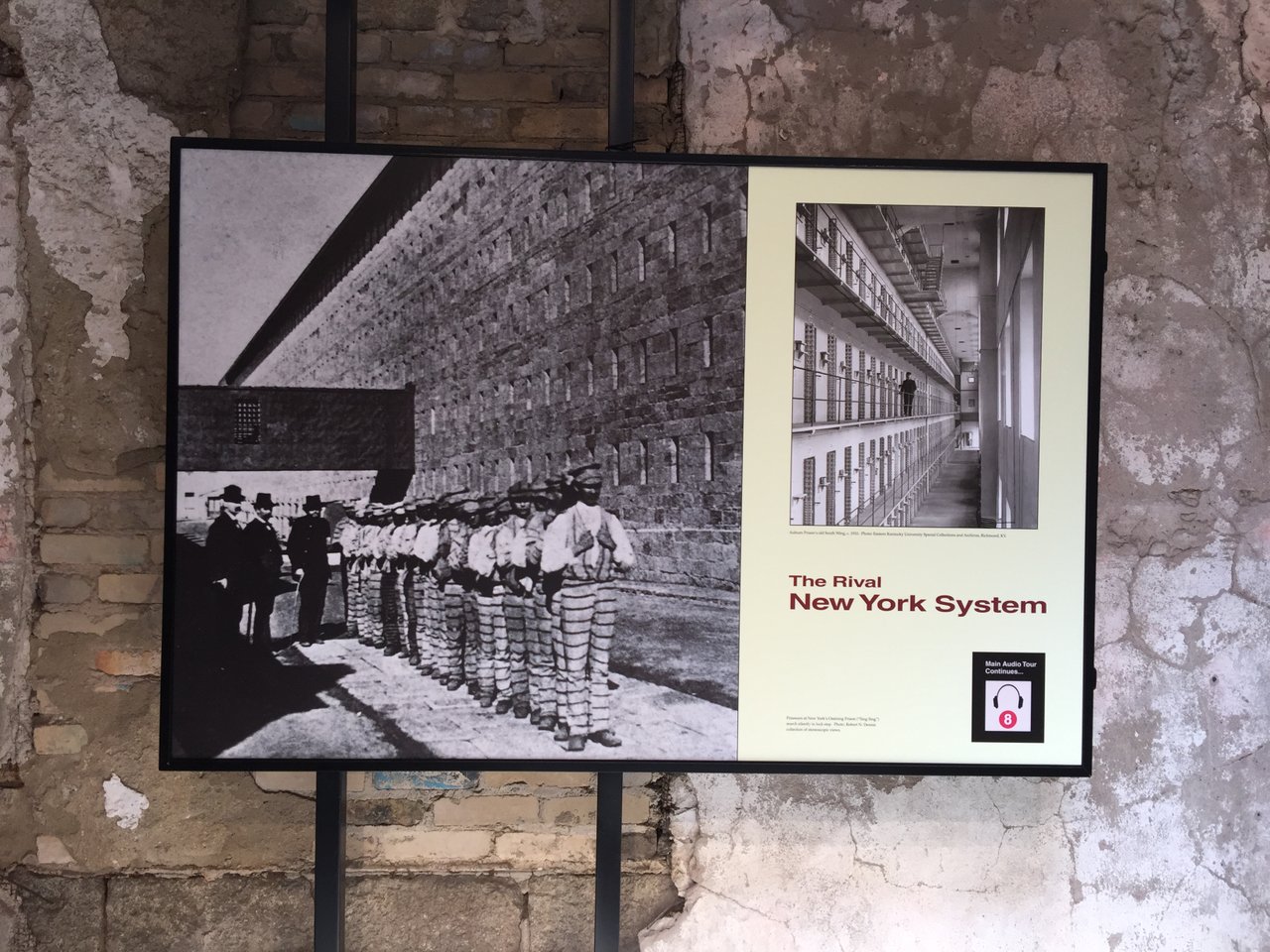
The second big mistake was putting the doors on the cells on the yard-side of the blocks. The inside of the blocks featured only feeding holes which guards used to deliver food to the inmates. This meant that practically speaking there was no way for guards to enter a cell from within the block and had to instead go out into the yard first, which was especially problematic during the winter months. I would also think that the use of "feeding holes" helped dehumanize the inmates both in their own minds and in the minds of the guards, but that's speculation.
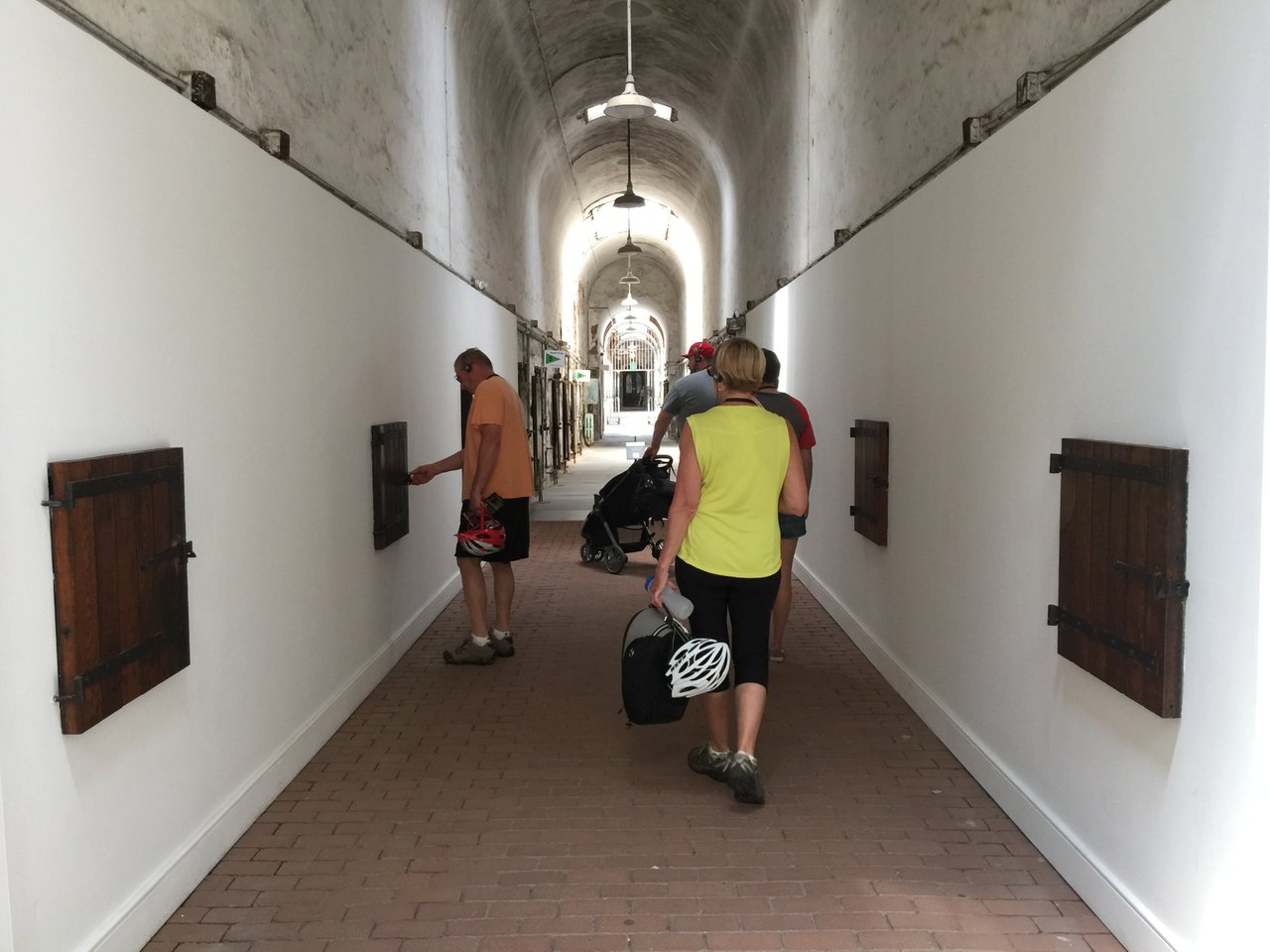
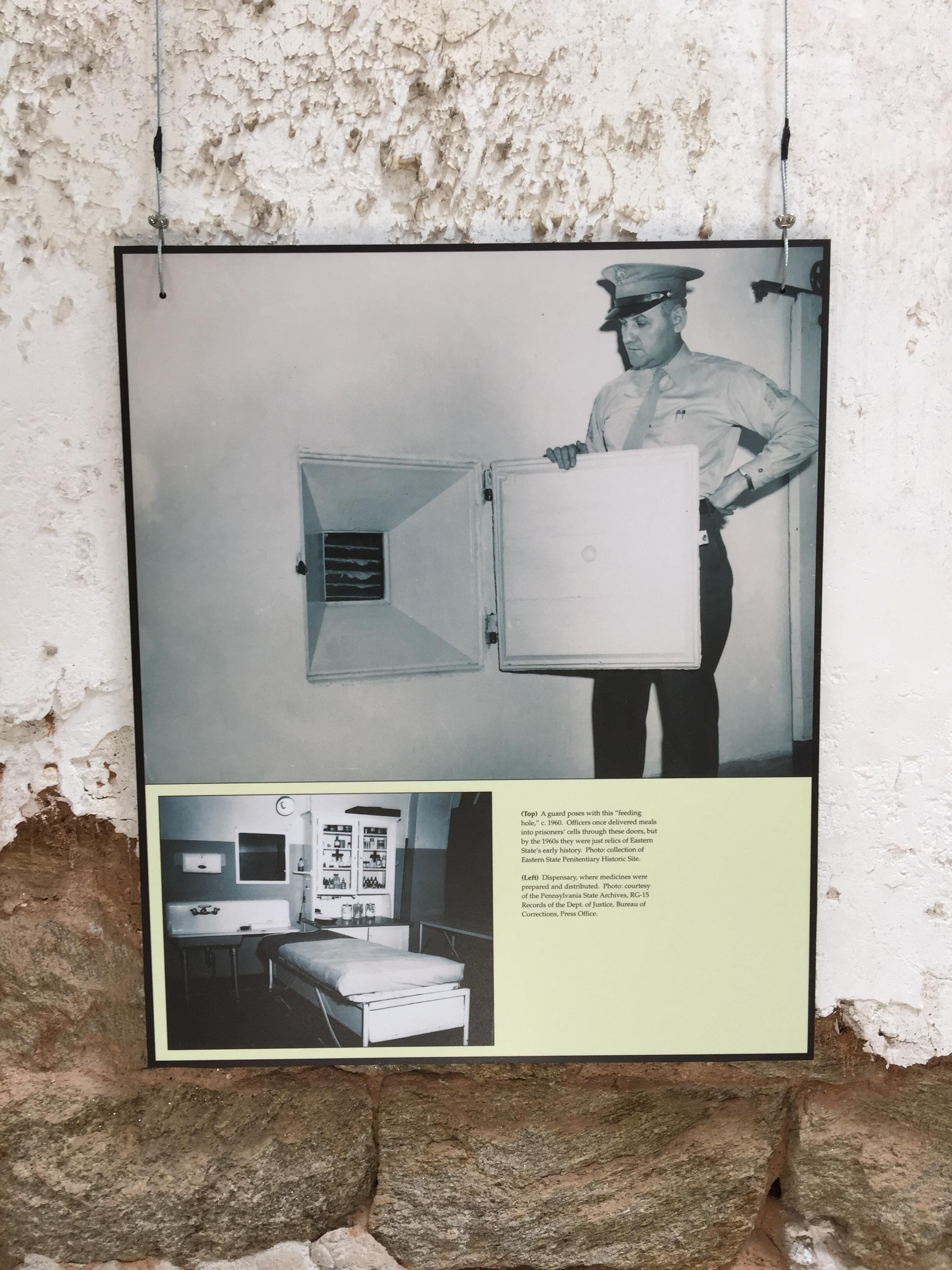
I was surprised to learn that there was a synagogue within the prison. The Jewish population was obviously a minority, but more than you might think given the prevalence of the Jewish Mafia in Philadelphia during prohibition. Apparently most of the Jewish inmates were involved with the mafia in one way or the other.
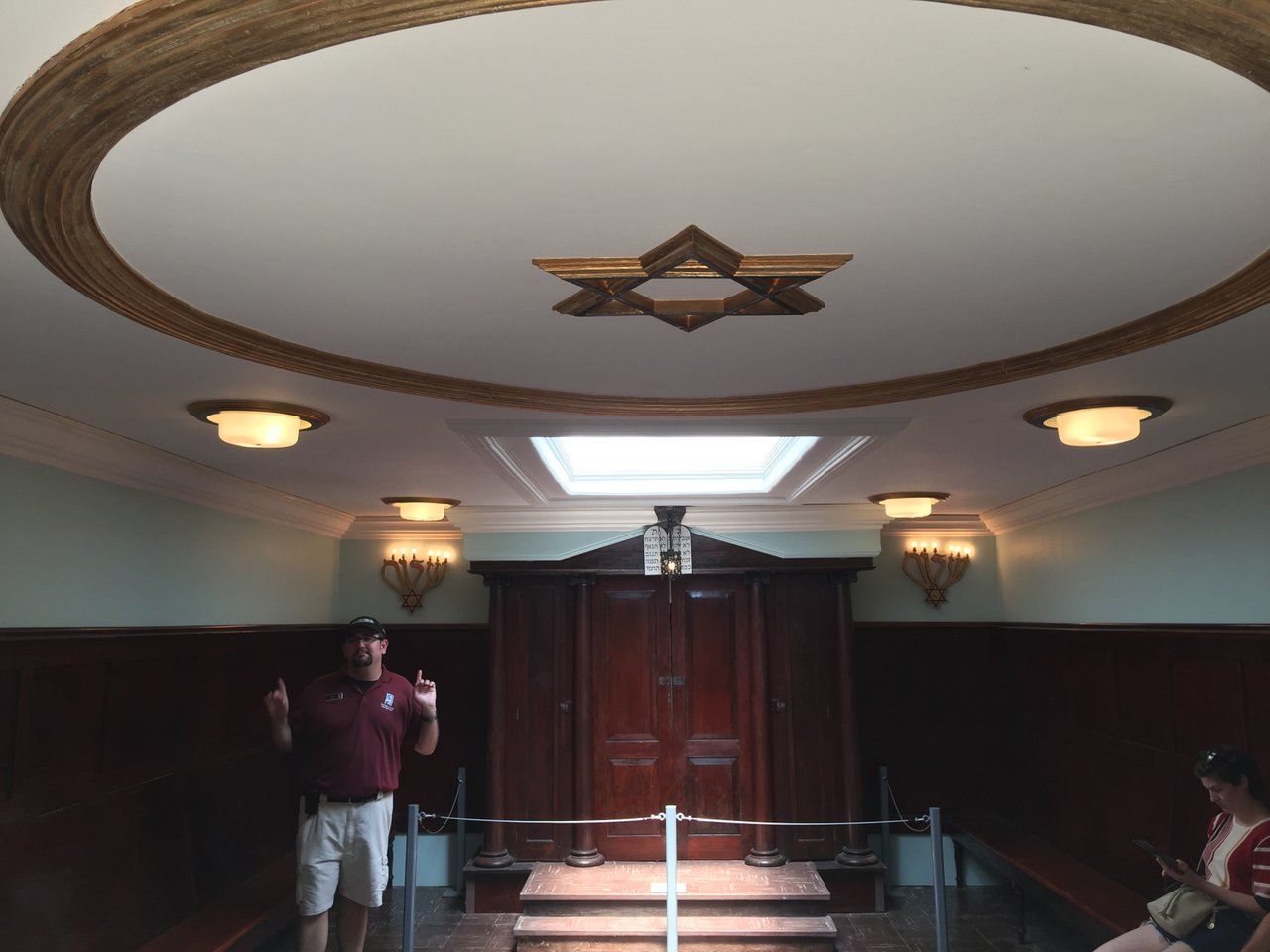
In keeping with the prison's progressive attitude, when the Jewish prisoners pointed out that the requirement to attend chapel felt like forced conversion, the prison allowed the inmates to convert the wood-working shop into a small synagogue and allowed Rabbis from local congregations to visit regularly.
Miscellaneous Factoids
Al Capone's cell:
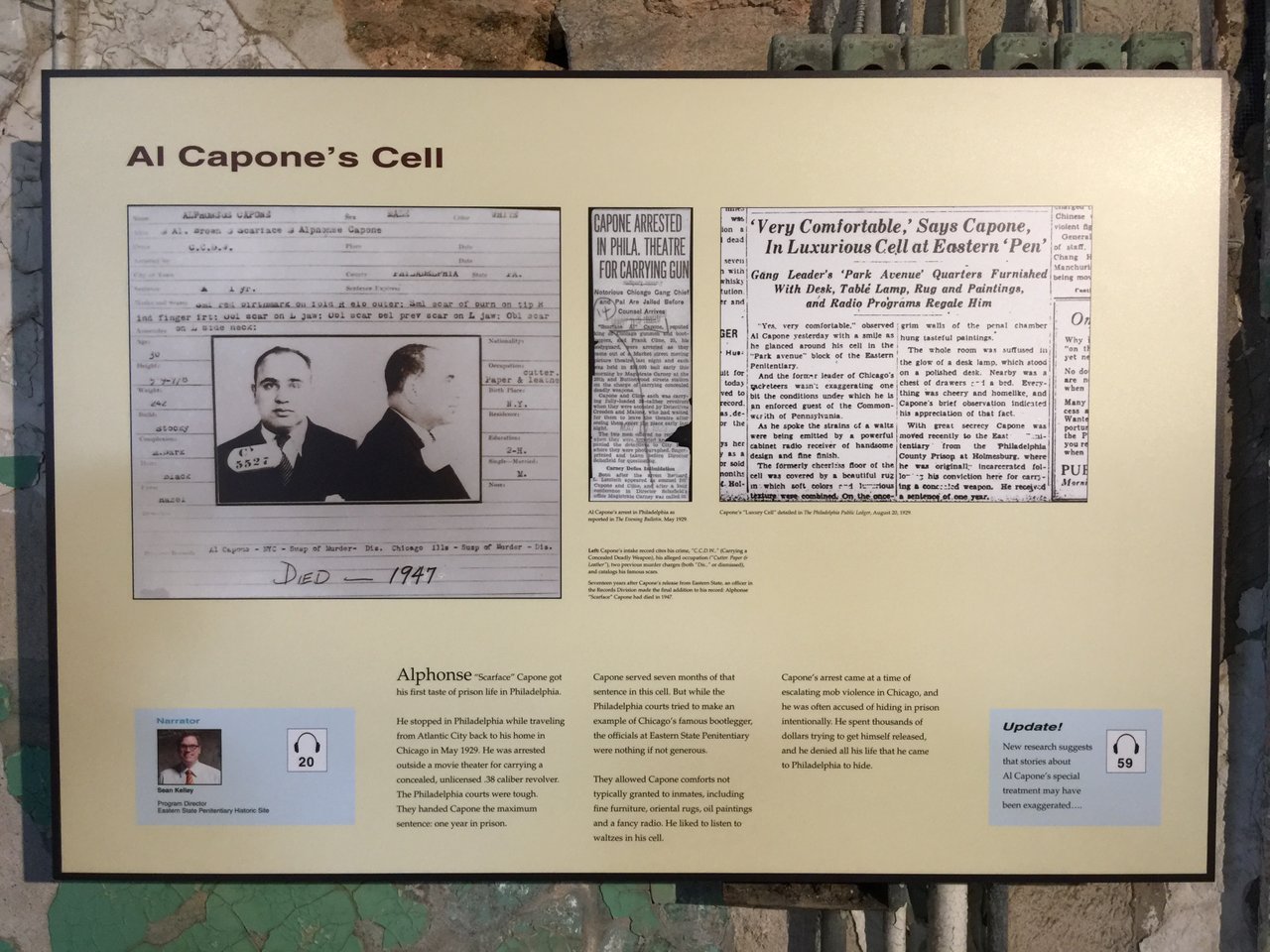
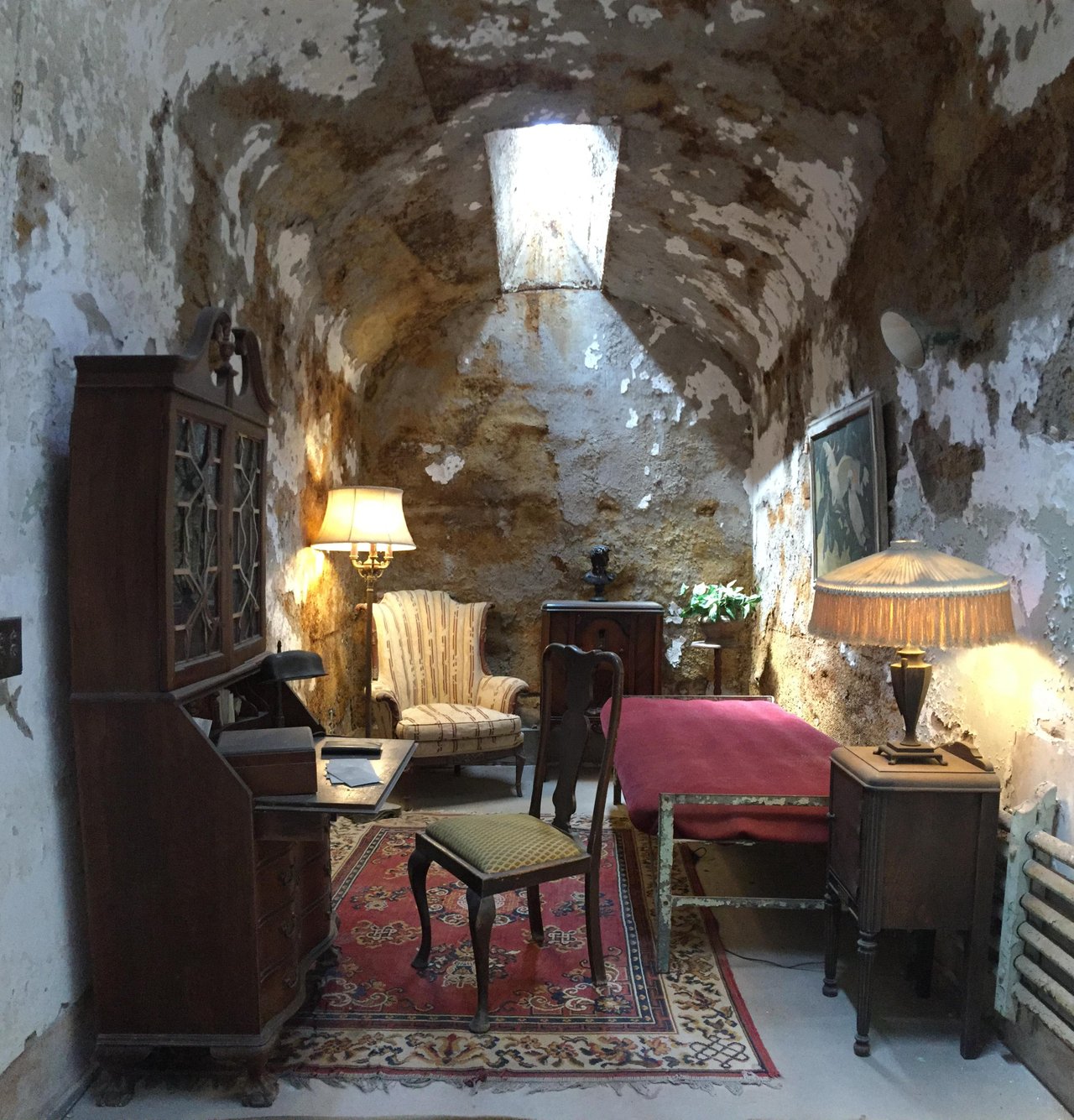
A dog named "Pep":

It appears that Pep, while being connected to an interesting myth about murdering the Governor's cat, was really one more experimental attempt to help rehabilitate prisoners by improving morale:

The museum also features beautiful art installations in some of the cells:
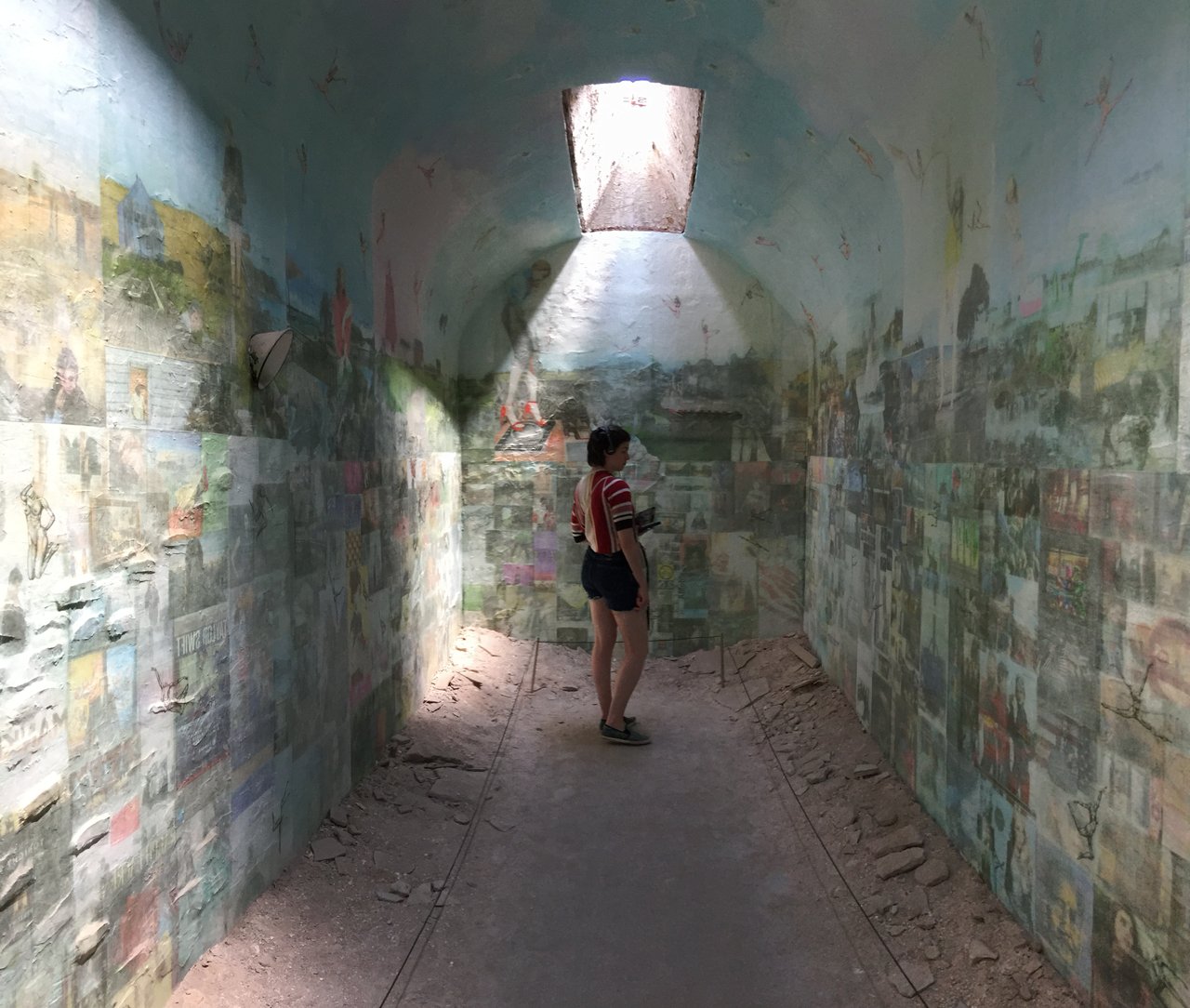
And great educational content on the many problems with our existing penal system presented in aesthetically pleasing and informative ways.
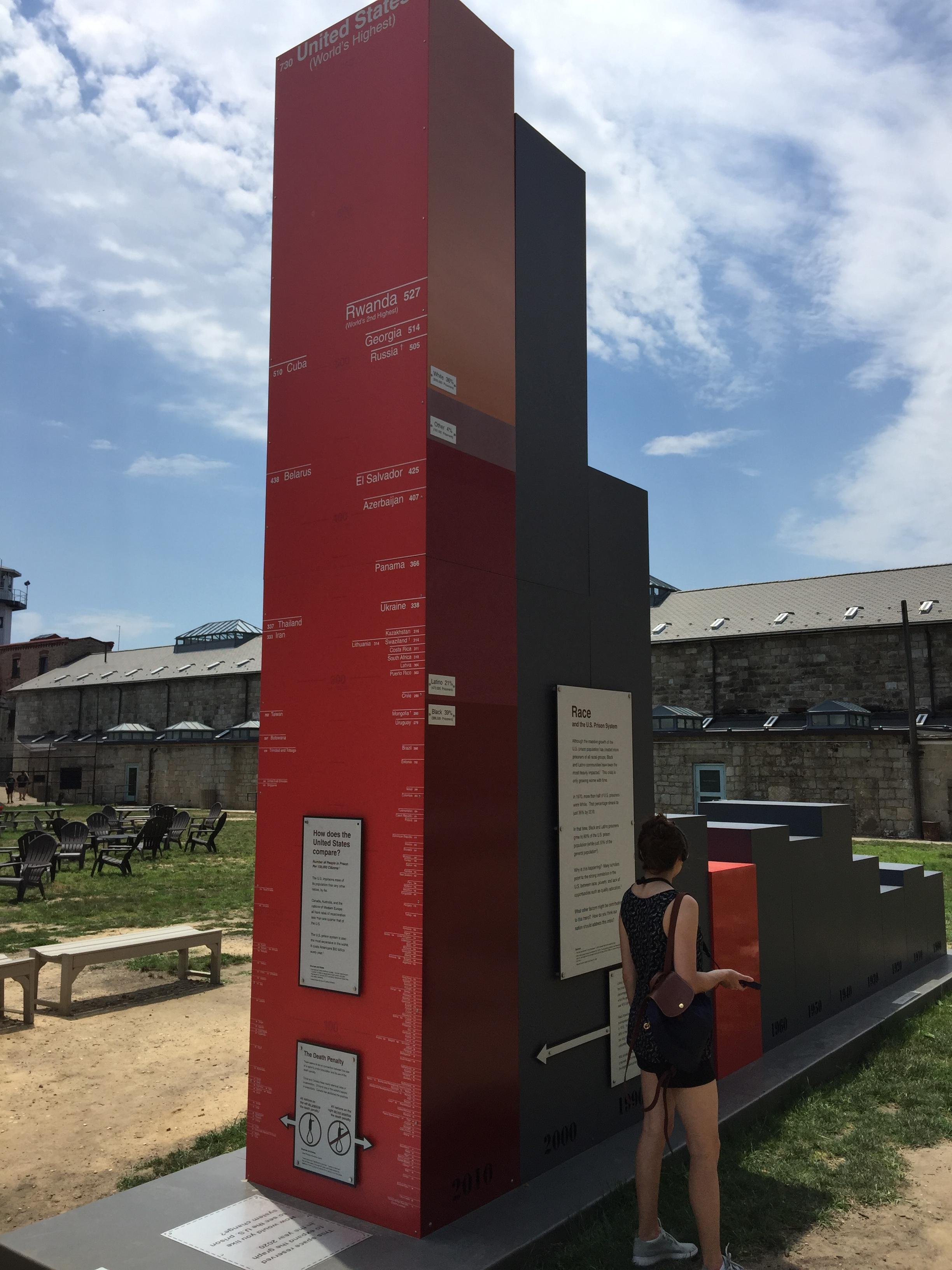
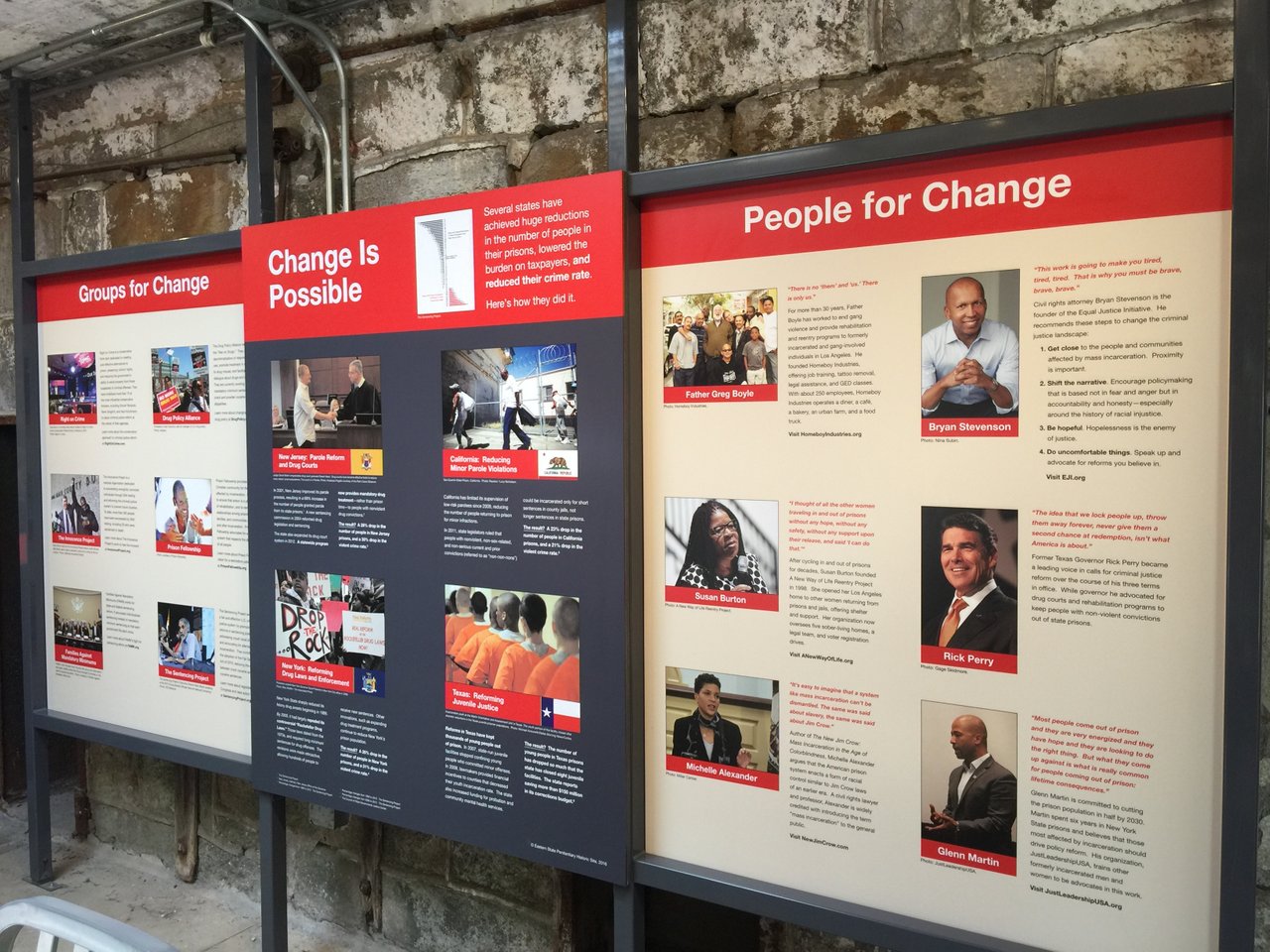
If you're ever in the area, and interested in gaining a deeper understanding of penal history in the United States, I couldn't recommend Eastern State highly enough. Not only is the prison itself an incredible site, but the staff are extremely talented and informative as well. Special thanks to our fabulous tour guide Connor!
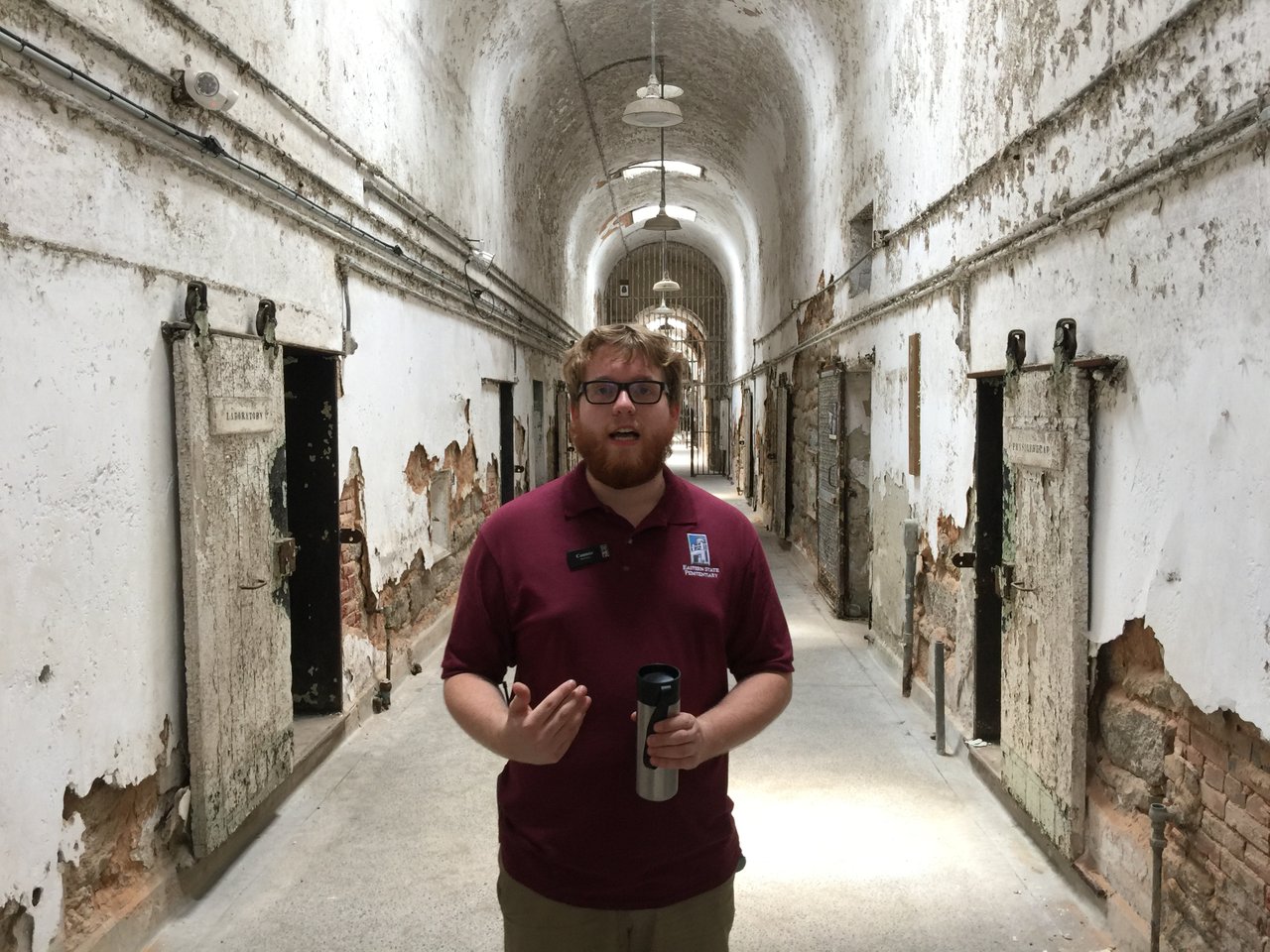
Thanks for reading!


